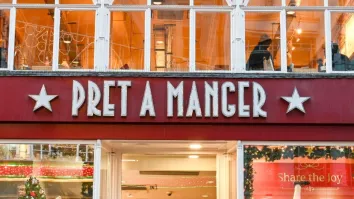
How to find funding in the restaurant sector
Find out what Livingbridge advises for a restaurant operator looking to grow.
Benoit Broch, director at mid-market private equity firm Livingbridge, has first-hand experience of these varied funding routes which was gained through investments in the likes of Pho, Rhubarb and Bistrot Pierre. He offers some advice on what a typical funding journey might look like for a restaurant operator looking to grow.
Stage 1: Start-up stage – proving your concept and model
When starting out, many restaurant operators look to angel investors, or friends and family, to inject some capital into their business. If their business model is not yet proven and generating stable revenue, they’re unlikely to be able to access debt facilities beyond an overdraft. This means finding an investor willing to try an unproven model – normally someone you already know or angel investors who see real potential in the proposition.
An angel investor suits many operators at this stage as they usually have limited input in the business, allowing the operator to pave their own way as they set out. That said, every angel is different, so at the beginning all parties must agree on the level of involvement they’re looking for.
Stage 2: Early growth – starting to expand
At this stage of growth a restaurant operator is likely to have ambitions that need an injection of capital – that might be a refurbishment, a limited roll-out, or they may be looking to take some money out of their business. Debt financing is a useful tool for raising smaller amounts, and under the debt umbrella operators are able to retain full control of their business and easily plan repayments due to the fixed costs and agreed terms.
However, the fixed nature of debt financing also means limited flexibility. Nuances in trading based on seasonality or unexpected impacts like roadworks outside a site, can create cash-flow problems. Changes in interest rates can also have a significant impact. As most loans require repayment from the beginning, operators may also have to start regular repayments before any real revenue growth has hit the top line.
A restaurant operator with rental/lease obligations will also have quasi-debt in their business, even if it’s disguised and not visible on the balance sheet. They should ensure they’re not over leveraged, as this could impact on their next stage of growth.
Stage 3: Rapid growth
If an operator has successfully grown their business, they may want to de-risk their position and take some money off the table, buy out other members of the management team or shareholders, or find further investment for their next growth plans. Due to the significant amount of capital required, equity may be the most suitable funding option. This is especially true for restaurant operators looking to facilitate an ambitious roll out programme, as many private equity houses will be able to provide follow-on funding after investment to support these plans.
There comes a time when many owners who have successfully built a business start feeling isolated at the top; they might have a great team around them but they’re keen to obtain an external perspective and support from experienced investors in the sector. They recognise five heads are better than one and they may be asking themselves ‘how can maximum value be driven out of the business I’ve created?’ Alongside experience and a great network in the sector, some private equity firms have a team of experts who can offer functional and strategic expertise in aspects of the business including IT, talent management and marketing. They should also have views on legislative changes, the competitive horizon and broader market outlook to help provide strategic guidance.
Many private equity backed entrepreneurs enjoy having the support of someone beside them who has a shared passion, as well as a shared investment, in helping the business to succeed. As a result, equity investment often creates fantastic outcomes for management teams; at Livingbridge on average companies more than double in value during our investment.
Stage 4: National success story
With years of solid trading and the credibility of a private equity backer behind them, a restaurant operator will have access to more debt options and will likely have a sophisticated debt and equity structure. Most businesses will already have some bank funding at this stage but the accessibility of finance increases with growth, allowing operators to have less dilution of their equity. Private equity firms can help operators analyse their leverage options and support negotiations, helping management teams use debt more tactically for their growth objectives.
So, what’s the next step? At this point an operator might be considering their future exit from the business, in which case they are likely to work closely with their management team and equity backers to create a successful and non-disruptive succession plan. Or they might be looking to continue growing with further private equity investments and considering a secondary buyout. Alternatively, they may be interested in floating – in this instance private equity firms, such as Livingbridge, which have an equity funds business, would be able to help an operator prepare to IPO.
There is no linear journey for any business and although from our experience this is a well-trodden path, restaurant operators may encounter these stages in a different order, or maybe not at all. Certainly, it is likely that some funding sources like debt will always be part of a larger business, but nothing is prescribed. It is key for an operator to find out from any funding source how involved they want to be, what they can offer besides funding, and how they can help them achieve their next stage of growth - whichever path they take.



























